Abstract
OBJECTIVE: To assess how attitudes and prescribing strategies of family physicians changed when drugs were delisted from the Ontario Drug Benefit formulary. DESIGN: Mailed, self-administered survey. SETTING: Family physicians' offices in Ontario. PARTICIPANTS: All family physicians practising in the Kingston, Frontenac, Lennox, and Addington Health District. MAIN OUTCOME MEASURES: Physicians were presented with six vignettes involving patients receiving a delisted drug. The choices were to recommend the patient pay for the medication, to substitute a drug still listed on the formulary, to make a special request that the medication be covered for this patient, or to offer another option. As well, the physicians were asked to indicate, on a 5-point Likert scale, their opinions regarding the effect of delisting on themselves and their patients. RESULTS: Physicians were most likely to change to a medication that was still on the formulary. Patient sex and ability to pay were factors in physicians' decisions. Physicians believe that the delistings are not likely to have adversely affected patients' health, that noncompliance is a problem because many once-daily formulations have been removed, that suitable alternatives are not always available, and that physicians should have been consulted more before the changes were made. CONCLUSIONS: Physicians usually substitute listed medications for medications that have been delisted. This is especially true for female patients and patients who are unable to pay.
Full text
PDF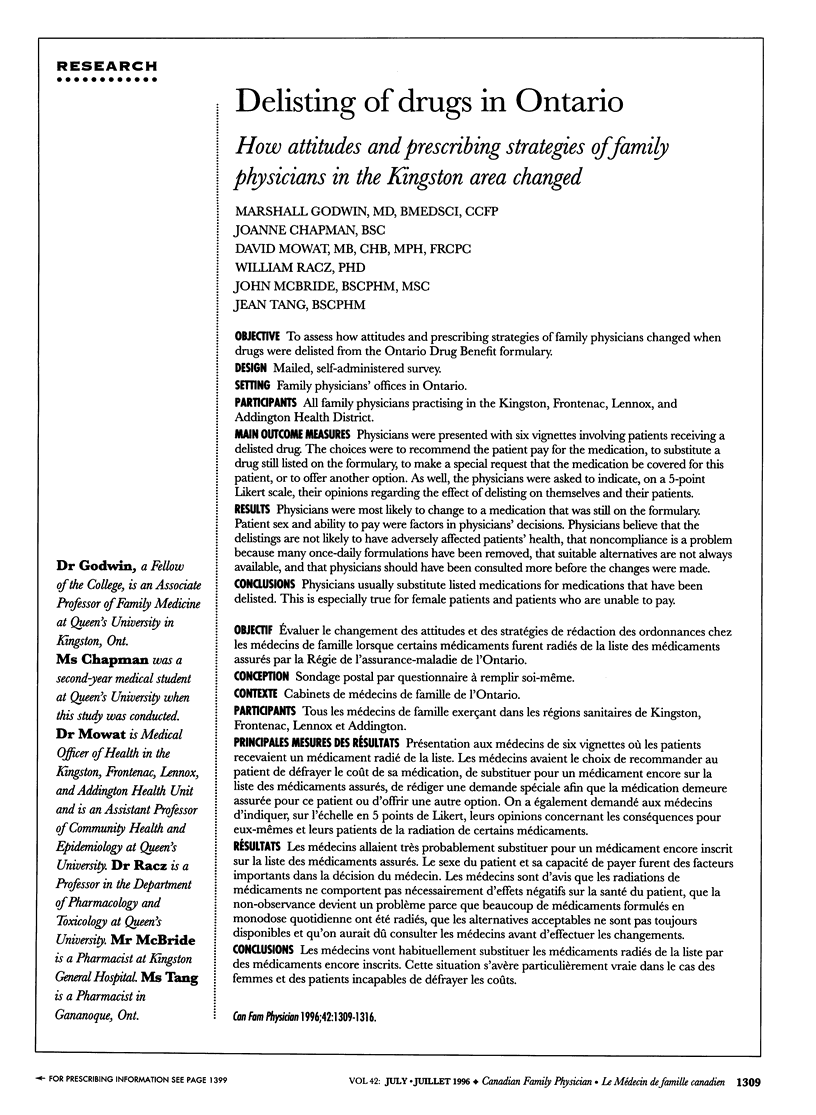
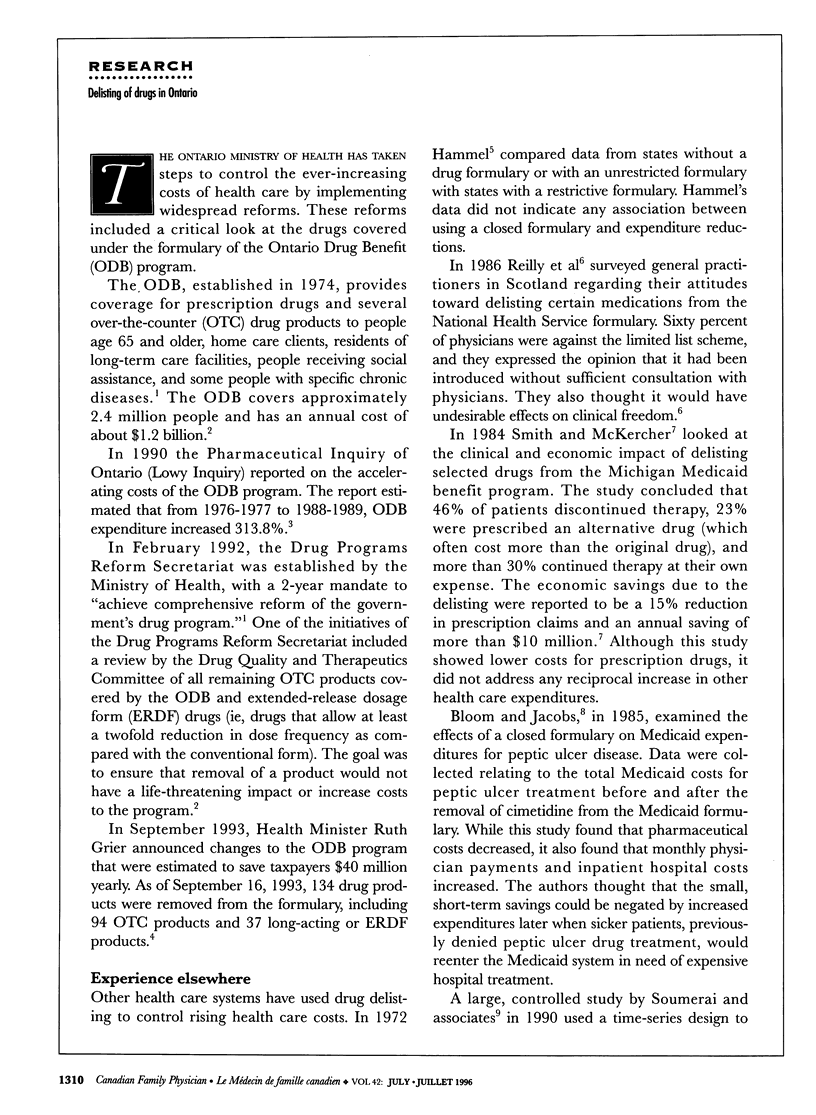
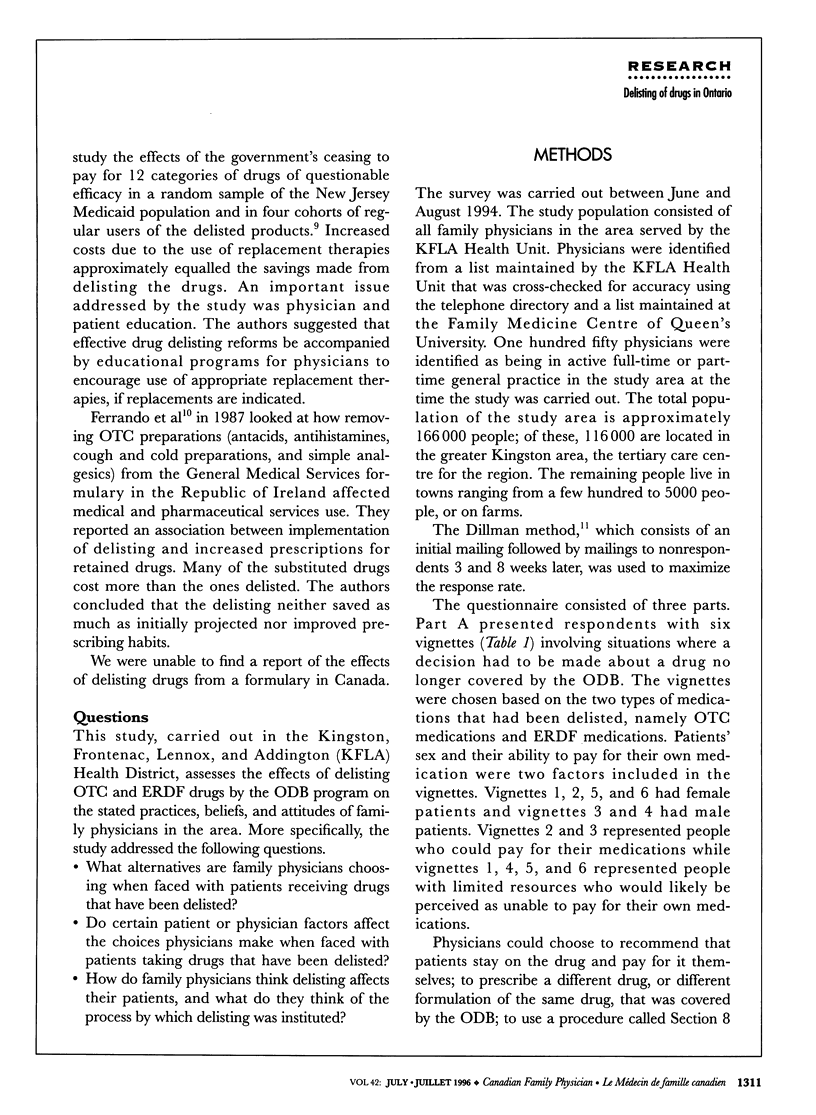
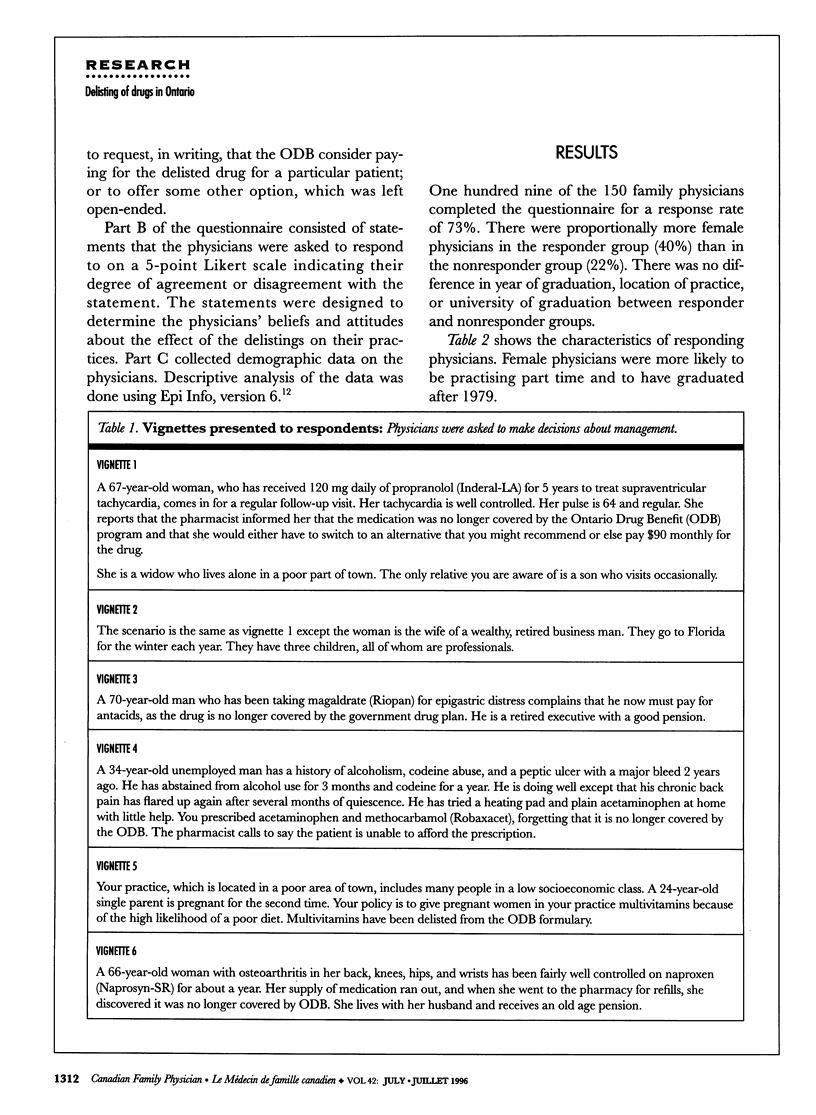
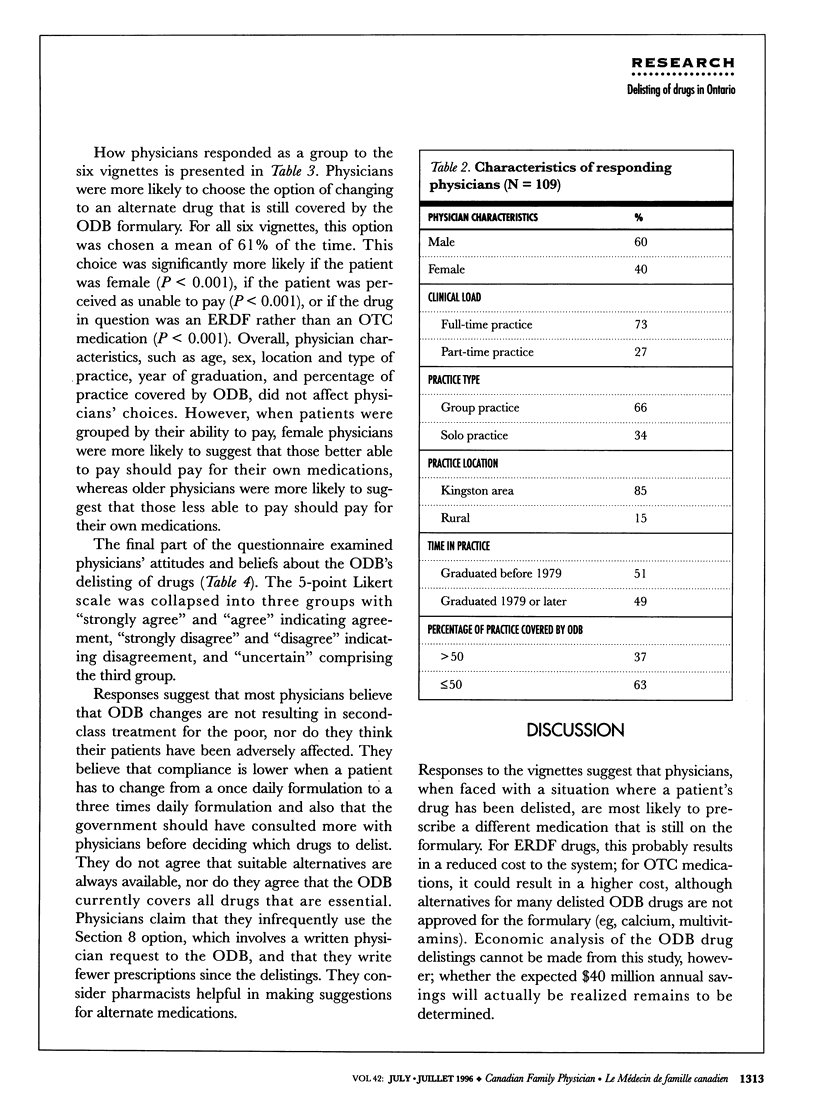
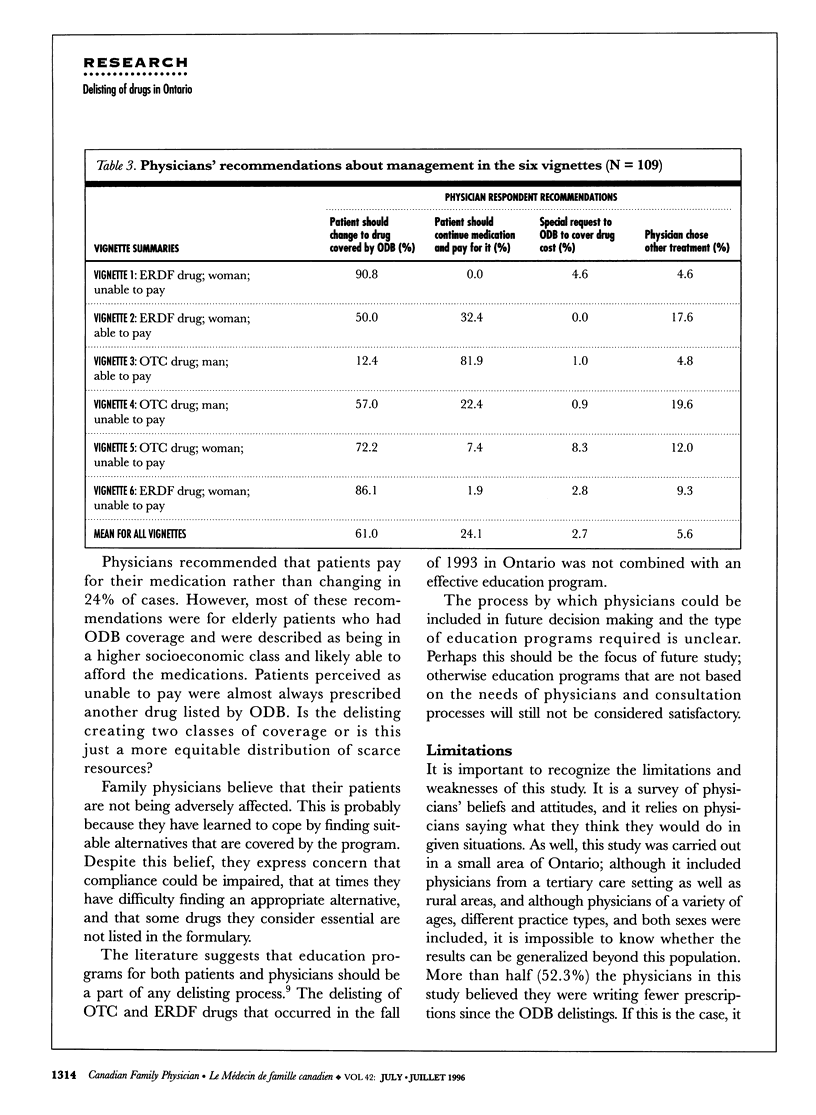

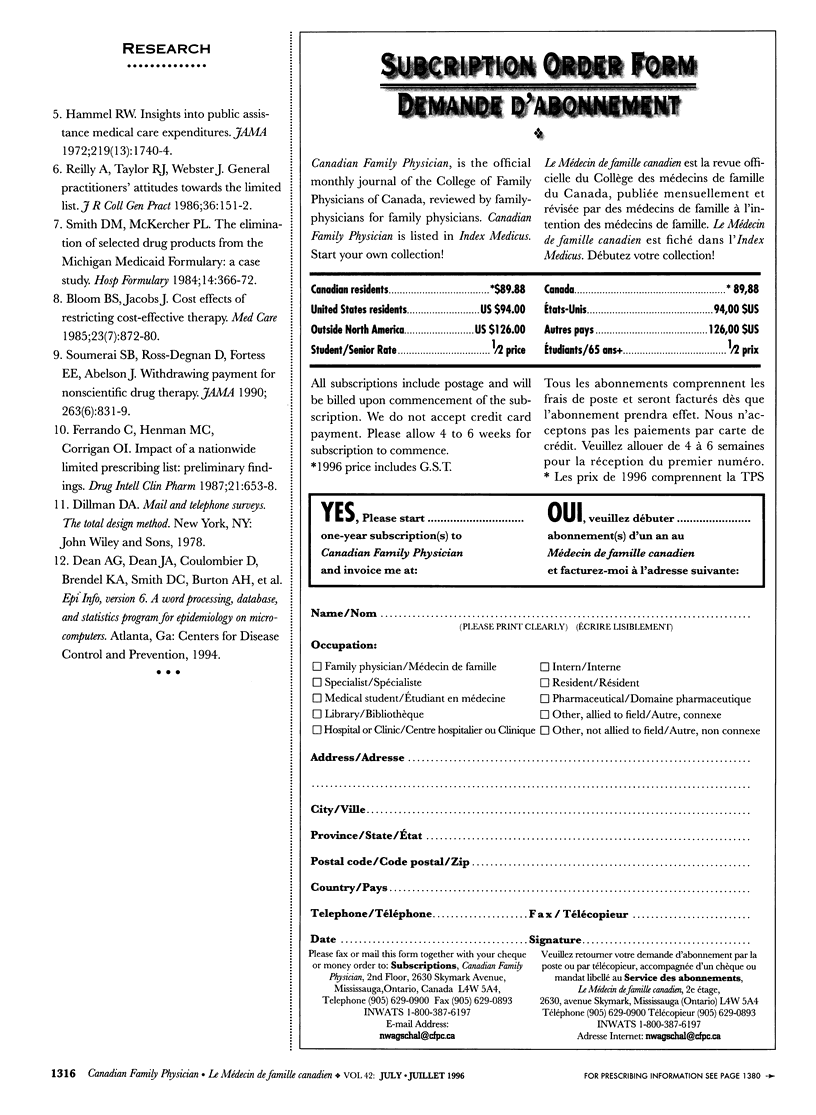
Selected References
These references are in PubMed. This may not be the complete list of references from this article.
- Bloom B. S., Jacobs J. Cost effects of restricting cost-effective therapy. Med Care. 1985 Jul;23(7):872–880. doi: 10.1097/00005650-198507000-00004. [DOI] [PubMed] [Google Scholar]
- Ferrando C., Henman M. C., Corrigan O. I. Impact of a nationwide limited prescribing list: preliminary findings. Drug Intell Clin Pharm. 1987 Jul-Aug;21(7-8):653–658. doi: 10.1177/1060028087021007-819. [DOI] [PubMed] [Google Scholar]
- Hammel R. W. Insights into public assistance medical care expenditures. JAMA. 1972 Mar 27;219(13):1740–1744. [PubMed] [Google Scholar]
- Lexchin J. Prescribing and drug costs in the province of Ontario. Int J Health Serv. 1992;22(3):471–487. doi: 10.2190/94N5-P2ML-CVP7-5WAG. [DOI] [PubMed] [Google Scholar]
- Reilly A., Taylor R. J., Webster J. General practitioners' attitudes towards the limited list. J R Coll Gen Pract. 1986 Apr;36(285):151–152. [PMC free article] [PubMed] [Google Scholar]
- Smith D. M., McKercher P. L. The elimination of selected drug products from the Michigan Medicaid formulary: a case study. Hosp Formul. 1984 May;19(5):366–372. [PubMed] [Google Scholar]


